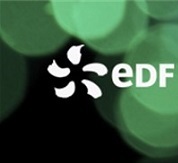The ups and downs of the French EEO scheme: positive and negative impacts on the building renovation market
Résumé
Since its inception in France in 2006, the Energy Efficiency Obligation (EEO) scheme has been subject to a growing obligation in each new period. However, the scheme has experienced different historical phases with low or more recently high prices (a fourfold increase of the price index was observed between January 2017 and December 2019) that show different contexts depending on the year reflecting in a first approximation the ease or otherwise of fulfilling the obligation.
In parallel with standardized actions mainly used in the scheme, specific programmes have been set up in a marginal way. Historically, these programmes include actions concerning information, and training of professionals. Today, these programmes are also used to manage the EEO scheme by facilitating the issuance of certificates or to target specific actions (e.g. disappearance of fuel oil or coal space heating).
In that way, a new programme concerning the energy renovation of housing allowing for an additional bonus was implemented above expectation at the beginning of the year 2019 with large impact on the retrofit market. This paper reviews the positive outcomes and the unexpected problems and their impacts on the energy renovation market (increase of retrofit market, orientation towards different technical solutions, up-front cost coverage structure, targeted customer, quality problem, lack of a long-term vision, etc.). These impacts show how difficult it is for public bodies to manage a scheme based on an obligation on utilities in connection with a market driven by other economic actors. On the long-term, the main question is how to manage the EEO price between too low incentive and high impact on energy price to transform the building renovation market.
| Origine | Fichiers éditeurs autorisés sur une archive ouverte |
|---|

